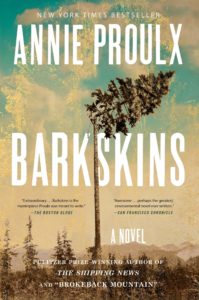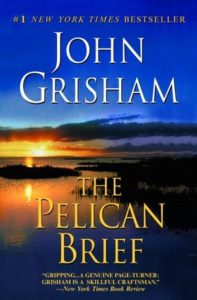The hero dashes from one continent to the next trying to stop the evil scientist/ evil corporation/ evil megalomaniac from flipping the switch and causing a world-wide catastrophe. The eco-thriller! Not only a novel, but coming to a screen near you.
There was a time when the vast majority of thrillers involving environmental issues, so called “Eco-Thrillers,” dealt with catastrophic, world-wide, or science fiction/horror type calamities. For the most part, they were not about climate change or localized issues.
These books were part-thriller, part-science fiction, and perhaps part-horror novel. Think of outstanding thrillers like Zoo by James Patterson, in which all of the animals of the world turned against humans, Jaws, by Peter Benchley, in which Great White sharks develop a sweet tooth for humans, and Jurassic Park, in which dinosaurs are brought back to life with cataclysmic results. And don’t forget Preston and Child’s Relic and the sequel, Reliquary, in which a monster accidentally is brought back from the rain forest and lives in and under the New York Academy of Sciences. All of these books and more were thrilling and fun to read, but how many bad animals, bad sharks, bad dinosaurs, and bad monsters can there be? Is this kind of novel enough to sustain reader interest? More importantly, is this kind of thriller any longer relevant in the age of climate change? Readers are ready for a new kind of environmental thriller.
Why does it bother me that books like Zoo, Monkey Wrench Gang, State of Fear, Pelican Brief, and my own novel, Drink to Every Beast, are lumped together as Eco-Thrillers? Because they are all so different. The only common denominator is an impact on or to the environment. When you read books like, say, Monkey Wrench Gang, Zoo, and Pelican Brief, and call them all “Eco-Thrillers,” this does a disservice to the books and does not accurately describe the genre or sub-genres into which they fit, especially given the radical evolution of the genre over the past few decades. There are enough of these books on the shelves it’s time we described them differently and more accurately.

Environmental Thrillers
Edward Abbey’s seminal novel, The Monkey Wrench Gang (1975), cracked open the door for what I like to call Environmental Thrillers. The Monkey Wrench Gang was about a band of environmental activists fighting, insurgent-style, against irresponsible development in the American west. This genre includes books dealing with real-life environmental issues, including recent works such as A. M. Halvorssen’s The Dirty Network, P.J. Lazos’ Oil and Water, Jon McGoren’s Drift: A Thriller, and Michael J. Fitzgerald’s The Fracking War. These books are showing the way to an invigoration of this genre. (This list is not exhaustive, there are others.)
These books, like Eco-Thrillers, put environmental issues front and center. The difference is, unlike Eco-Thrillers, Environmental Thrillers deal with real-world environmental issues that are more localized in their impact. I would put some novels dealing with climate change in this category too, when the impact of climate change is experienced locally (rising seas, drier/wetter weather, increases in extreme weather, and the like). Thrillers about climate change, however, get their own sub-genre: Cli-Fi.

Cli-Fi
There is a growing body of novels, mainly thrillers, dealing with the possible (probable? likely?) impacts of climate change. These are often imbued with science fiction (Sci-Fi/Cli-Fi, get it?) or at least speculative fiction. They range from climate change deniers, like Michael Crichton’s State of Fear, to the more common, full-on Jeremiads about the probable devastating impact of climate change. Books positing serious impact as a result of climate change include Flight Behavior by Barbara Kingsolver, Barkskins by Annie Proulx, and Aurora and 2312, by Kim Stanley Robinson.

Environmental Legal Thrillers
In 1992, John Grisham wrote Pelican Brief, followed by The Appeal (2008), and Gray Mountain (2014) and introduced readers to Environmental Legal Thrillers. I think it’s fair to include the non-fiction A Civil Action (1995), by Jonathan Harr, in this category as it reads like a legal thriller. What made these legal thrillers different was that they presented real-life environmental issues in which our protagonist, most often a lawyer, is trying to get to the bottom of the environmental crime (yes, for the most part, there is a crime). At the same time, some environmental harm is being inflicted on a small geographic area or to a relatively small number of people—just like in real-life. These are similar to the cases I used to handle when I was a young Assistant Attorney General for Pennsylvania’s environmental agency.
Environmental Legal Thrillers (and Environmental Thrillers)—unlike Eco-Thrillers—are not science fiction-y. They may have elements of speculative fiction (“what if?”), but at bottom they are dealing with real-life environmental issues and a protagonist struggling to resolve those issues through the legal process.
My novel Drink to Every Beast (Headline Books, 2019), deals with a young environmental prosecutor investigating the dumping of toxic waste into a river, which killed two teenagers, and trying to stop it from occurring again. The sequel, Amid Rage (to be released) deals with a battle over a permit for a coal strip mine. Yet another sequel, Strange Fire (to be released) is about criminal activity associated with fracking for natural gas.
While some have claimed the interest in legal thrillers is down, I think the reading public is just waiting for a fresh approach to the genre. I’m convinced the public is ready for these novels and confident a band of young writers is eager to write them.

















